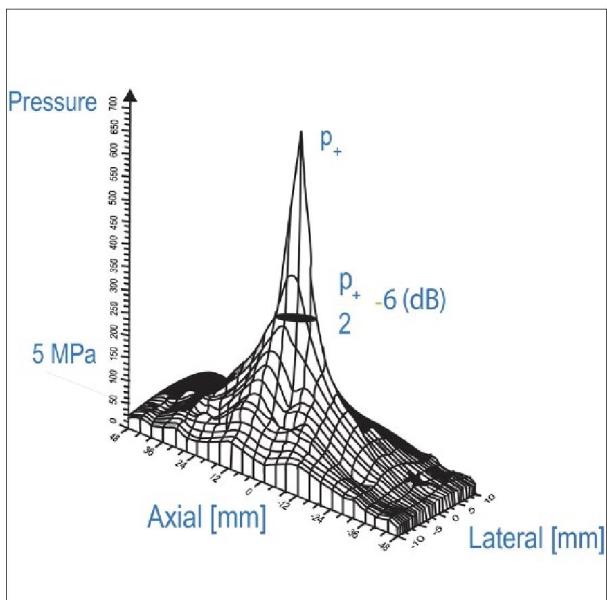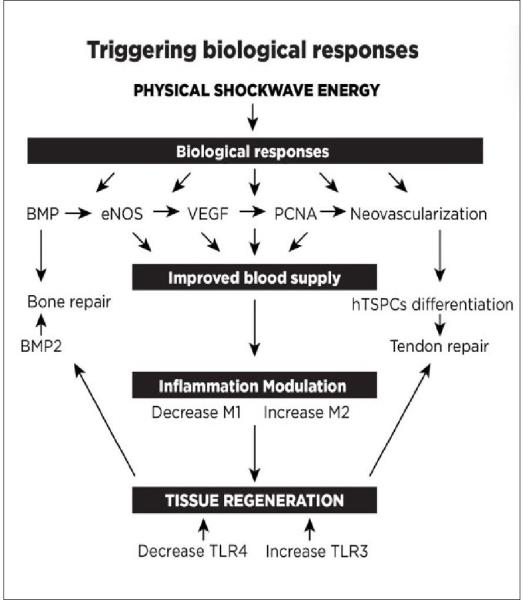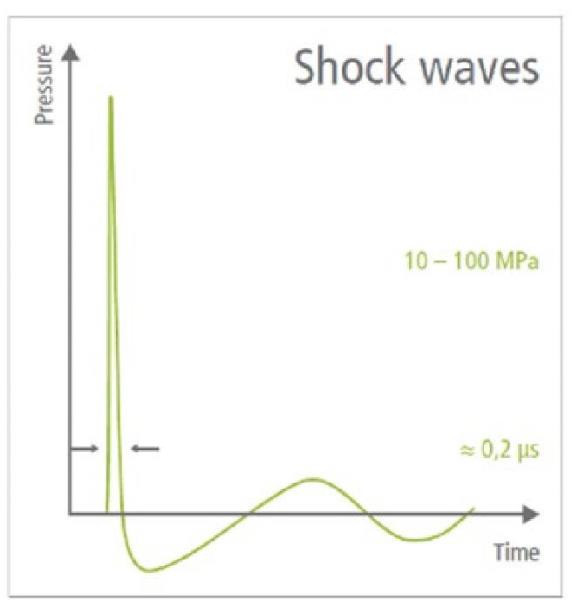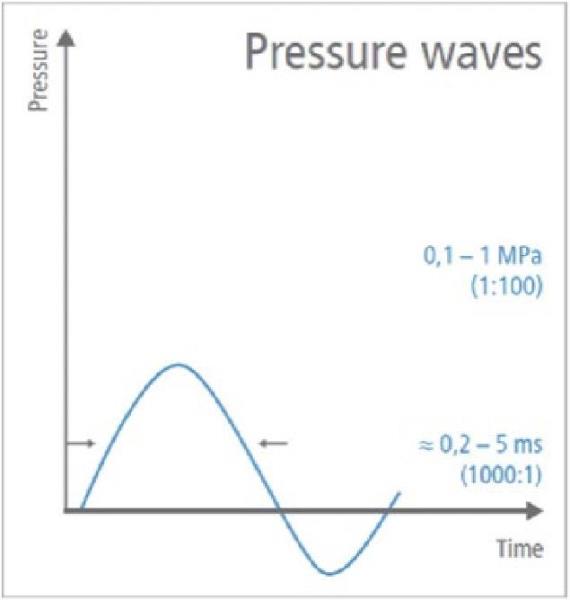Embracing Shockwave Technology in Pain Management
February 1 2024 Matt DiduroEmbracing Shockwave Technology in Pain Management
February 1 2024 Matt DiduroRevolutionizing Chiropractic Healing Embracing Shockwave Technology in Pain Management
by Matt Diduro, DC
In the shadow of the opioid epidemic, we're tasked with reevaluating our approach to pain management. The good news? Shockwave technology is emerging as a beacon of hope, offering a method that is both effective and congruent with our body's innate healing processes: healing from above-down, inside-out.
Evolving Beyond Traditional Pain Solutions
The familiar avenues of medications, injections, and surgeries, while reliable, have their downsides, including the potential for addiction and unwanted side effects. As we've seen, opioids have become a national crisis. The CDC pinpointing a staggering 75.4% of drug overdose deaths in 2021 involved opioids. While less addictive, injections and surgeries present their risks: potential complications, extended recovery times and overwhelming medical costs. What's more, they often provide only temporary relief without addressing the root causes, merely masking the pain while underlying issues persist. In this setting, shockwave technology enters the arena as a holistic and revolutionary approach.
The Potential of Shockwave Therapy in Practice Originally devised for kidney stones, shockwave therapy has evolved. It's a non-invasive way to jumpstart the body's repair mechanisms that administers waves of energy into the body, initiating a biological process called mechanotransduction. This method not only sparks the body's inherent repair systems — boosting blood flow, speeding up cellular rejuvenation, activating and recruiting resident stem cells and fostering new blood vessel growth — but also aids in modulating inflammation, a frequent pain source.
 Figure 1
Figure 1
 Figure 2
Figure 2
Addressing Inflammation Intelligently As chiropractors, we recognize that while inflammation is a natural defensive response, it can become a barrier to healing if it persists. Effective management of inflammation is thus crucial to facilitate the body's recovery and reduce pain sustainably.
Understanding the Spectrum of Shockwave Technology It's essential to discern between the types of shockwave technologies—electrohydraulic, electromagnetic, and piezoelectric. Each has distinct benefits and applications, from broad coverage to focused treatment areas, which can significantly impact clinical outcomes.
Clarifying Misconceptions in Shockwave Therapy True shockwave devices generate a high-pressure pulse, distinguishing them from radial devices that produce lower intensity waves. As we consider integrating these technologies into our practice, it's critical to make informed choices based on accurate information.
Kinds of shockwave technology
Electrohydraulic shockwaves: Generated using an electric spark in water. For decades, this was used for conditions like kidney stones but has been effectively reimagined for musculoskeletal issues especially as a manufacturer has modified their devices to treat both with a focused and unfocused or low-intensity wave. When researching ask about the width and depth of coverage as one boasts a coverage area of 7cm x 12cm to ensure the injured cells receive treatment.
Electromagnetic shockwaves: Produced by a rapidly changing magnetic field, they have broad applications in pain management. These typically deliver small amounts of energy to a small focal area.
Piezoelectric shockwaves: Originating from the piezoelectric effect, these shockwaves are created when voltage is applied to crystals through the expansion and contraction of the crystals.
Beware of confusion
For a device to produce a true shockwave, it is characterized by a single, mostly positive pressure pulse followed by a comparatively small tensile wave. This is important because radial devices often call themselves shockwave devices. This is misleading. Radial devices produce low intensity pressure waves. They differ from a true shockwave as they are acoustic pneumatic pulses with a low steeping effect and slow rise time with comparatively large negative pressure (tensile wave).
Do your research on true shockwave devices as well. Look for reputable companies involved with research, who are registered and ideally have FDA clearances and approvals.
 Shockwaves are acoustic pulses with hing positive pressure, fast and steep rise time followed by comparatively small negative pressure (tensil wave).
Shockwaves are acoustic pulses with hing positive pressure, fast and steep rise time followed by comparatively small negative pressure (tensil wave).
 Radial pressure waves are acoustic pneumatic pulses with a low steeping effect, slow rise time with comparatively large negative pressure (tensile wave).
Radial pressure waves are acoustic pneumatic pulses with a low steeping effect, slow rise time with comparatively large negative pressure (tensile wave).
Patented Advancements and Clinical Relevance The recent patent granted for a dual-function shockwave device underscores the dual benefits of managing pain effectively and reducing reliance on opioids. This is a stride forward that aligns with our commitment to patient care and holistic health.
Flexible elastic membrane adapts optimally to the treatment area
Expanding Chiropractic Treatment Horizons Shockwave therapy complements the foundational chiropractic belief in the body's ability to heal from within. Studies, such as those focusing on plantar fasciitis, demonstrate significant pain reduction, supporting the therapy's potential to address chronic conditions effectively. In one study, patients with chronic plantar fasciitis were treated with shockwave. After 12 weeks, they had data on more than 98% of the patients. At the end of the study, the median reduction in pain was 69% in the extracorporeal shock wave therapy group and 34.5% in the placebo group. 2
The Role of Integrated Care Shockwave therapy isn't a panacea but rather a powerful tool that enhances our existing chiropractic techniques. Integrating this technology into a comprehensive treatment strategy can amplify our ability to provide relief and recovery for our patients.
Embracing a Future of Holistic Healing The trend in healthcare is moving towards non-invasive, drug-free treatments, and shockwave technology is at the forefront of this shift. It's not just about alleviating pain; it's about offering patients a path to faster and more complete recovery.
The ongoing research and clinical trials sponsored by credible shockwave companies are testament to the technology's effectiveness. This research is crucial in guiding our practices and ensuring we provide the safest and most effective treatments. It’s important to note credible shockwave companies are actively sponsoring studies to demonstrate the effectiveness and safety compared to using opioids. In addition, the research is out there and recent studies are opening minds to new ways.1
As we look to the future, this innovation represents a significant step in pain management—one that doesn't just manage symptoms but promotes overall well-being and adheres to our principle of doing no harm. It's time for us to embrace this change and lead our patients towards a new era of chiropractic care. Are you ready to ride the wave?
References
Schroder A, et. al. Extracorporeal Shockwave Therapy in the Management of Sports Medicine Injuries. 2021;20(6):298-305. PubMed website. https://pubmed.ncbi.nlm.nih.gov/34099607/. Accessed Nov. 8, 2023.
Henry C. Barry, MD, MS. Focused Extracorporeal Shock Wave Therapy Better Than Placebo to Relieve Pain in Patients with Chronic Plantar Fasciitis. 2015;92(7):635
Call out box option
Shockwave is used to treat a variety of conditions, including:
Plantar Fasciitis
Tendonitis
Calcific Tendonitis
Myofascial Pain Syndromes
Scar Tissue
Spinal Decompression
Muscle Strains and Sprains
Chronic Neck Pain
Jumper's Knee (Patellar Tendonitis)
Shin Splints
Frozen Shoulder (Adhesive Capsulitis)
MATT DIDURO, DC, offers specialized neuropathy and chiropractic care at ATL Pain Institute in Alpharetta and Atlanta. 29 years in health care, DiDuro is also an Adjunct Professor at Life University and a former Director for Life University’s Rehab Center. He is an advocate for shockwave treatments. Reach him at [email protected], 855-285-7246 or www.softwavetrt.com.
 View Full Issue
View Full Issue






